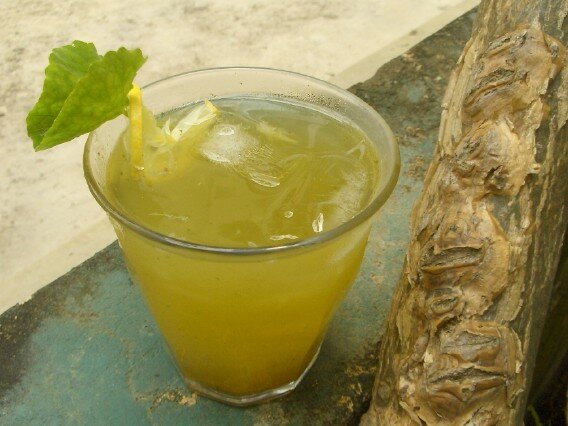Forget Botox. When it comes to preserving their looks, Asians have always turned to the Indian Pennyworth.
I have always been intrigued by the length people go to, to regain their youthful looks. The thousands of dollars spent on cosmetic surgery and the piercing of needles into their bodies is a frightening thought to me. As a culinary teacher, I have always preached the benefits of natural ingredients as a cure for ailments and even the answer to eternal youth. One of my favourites is Indian Pennyworth (centella asiatica), a kidney-shaped herb widely used in Asian cooking and as a cure for many illnesses.
Rich in minerals and vitamins, Indian Pennyworth is known to be a “one herb pharmacy” because of its many health-boosting properties (antioxidant, antibiotic, antibacterial, anti-inflammatory, anti-fungal, and diuretic, among others). A poultice of the leaves can help heal bruises and wounds, as well as treat skin diseases such as eczema and psoriasis.
In China, legend has it that this herb (known as jixuecao) was a principal ingredient in an elixir, and was referred to as the “fountain of youth”. Yogis in India take a cup of tea mixed with Indian Pennyworth and honey to help them get into a deeper state of meditation. In traditional Malay medicine, mothers use the herb (called daun pegaga) to help contract the uterus after childbirth and improve blood circulation. The Malays also refer to it as “awet muda”, which means “preserver of youthfulness”.
This herb can be found in local markets but the best way to ensure a continuous supply is to grow your own.
I often use Indian Pennyworth in my cooking, too. The herb is usually eaten raw in salads, but can also be cooked as a vegetable or made into a drink. The leaves taste slightly bitter and are best used with other ingredients to mask the bitterness. The next time you make a salad, throw a few leaves into your usual salad recipe. It can even be chopped up and mixed into rice, noodles or curries.
There is an old saying that goes, “Two leaves a day keeps old age away”. I grow this herb in my garden and I have started eating two leaves a day. I'm leaving it to Nature. There are some things that can be cured; the rest, as they say, is inherited!
Recipe 1
Cooling Spiced Pegaga Drink

Serves 2
Ingredients
2 ½ cups water
3 tbsp rock suger
1 cup Indian Pennyworth leaves, loosely packed in a cup
1 tsp cumin powder
Juice of 1 lime
Pinch of salt
Method
- In a pot over medium heat, boil water with rock sugar until it dissolves. Turn off heat and add Indian Pennyworth leaves. Let it cool to room temperature.
- Place in blender and process till Pennyworth leaves are well blended. Strain juice into a jug and discard leaves. Mix in cumin powder, lime juice and salt. Serve cold.
Recipe 2
Spicy Apple Pegaga Salad

Serves 2
Ingredients
2 green apples, peeled and grated
1 cup Indian Pennyworth, loosely packed in a cup, sliced
2 segments of pomelo, discard the membrane and break up sacs
Dressing
2 chili padis, chopped
2 cloves garlic, finely chopped
1 shallot, finely chopped
1 sprig coriander including stem and roots, finely chopped
1 tbsp fish sauce
juice of 1 lime
4-6 tsp palm sugar
Method
- Mix the green apple, Indian Pennyworth and pomelo in a bowl.
- Prepare dressing by mixing all the ingredients in a separate bowl. Adjust the flavours so that the sauce is equally hot, salty, sour, and sweet. Allow sauce to sit for at least 15 minutes for the flavours to come together.
- Pour the dressing in the salad mixture and mix well. Serve immediately.
FOLLOW US

STAFF BLOGS
Chilli Padi
VIVIENNE KHOO
Couch Potato
ASIA!NS
Field Notes
DEBBY NG
From Jerusalem to the West Bank
DAN-CHYI CHUA
Words and Letters
CLARISSA TAN







,-China,-16th-c.,-Jacqueline-Simcox-Ltd.jpg)


